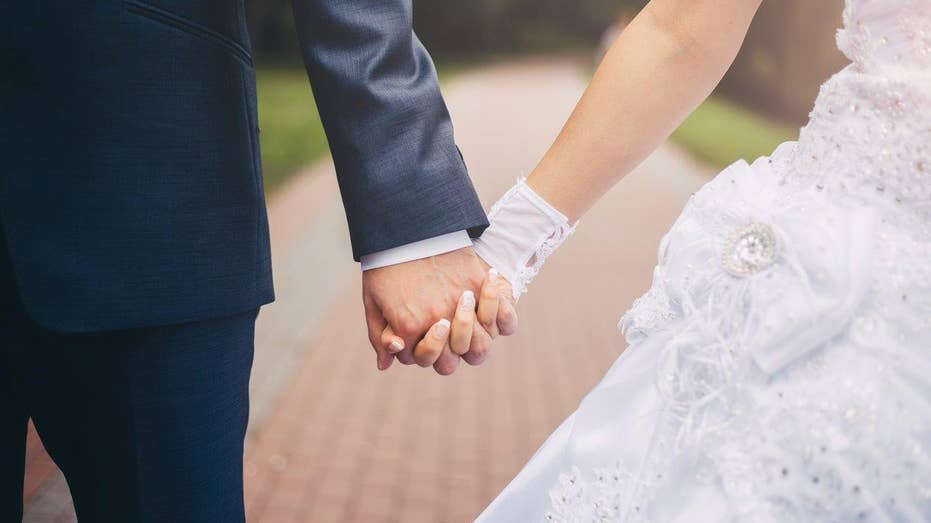The month of May is here, and with it comes the start of what’s typically considered wedding season in the U.S.
As couples celebrate their big day and others attend weddings as guests, some may wonder how much weddings typically cost.
Weddings averaged $33,000 in total cost last year, according to The Knot’s “2025 Real Weddings Study.” That, the wedding planning resource company found, marked a $2,000 decline from the prior year.
There are a lot of components that typically go into a wedding and reception, such as the venue, decorations, food, photographs, transportation, DJs or a band, and other assorted expenses.
Couples spent $12,200 on average on their venue in 2024, according to The Knot.
Catering averaged $80 per plate last year, its report found. Meanwhile, flowers and DJs were four-figure expenses, coming in at $2,700 and $1,700 on average.
The cost of hiring someone to capture photos of a wedding was $2,900, The Knot said.
While The Knot has not yet finalized data for the typical price tag that weddings are trending in 2025, the overall expense for couples’ big day “can vary widely depending on several factors, including location, guest count, wedding style, and the number of vendors hired,” The Knot senior content manager Hannah Nowack told FOX Business.
Weddings were cheaper in certain states, like Utah, where they averaged approximately $18,000 in 2024, or Iowa, where the average was $19,000, Nowack said. New Jersey, Rhode Island and Illinois were some of the pricier states, averaging $57,000, $51,000 and $39,000, respectively.

When it comes to the number of guests, weddings in 2024 with less than 50 set couples back $15,000 on average, according to The Knot 2025 Real Weddings Study. Those with more than 100 averaged $42,000.
5 MOST SURPRISING WEDDING STORIES OF 2024: WHICH ONE TAKES TOP HONORS?
“While economic pressures continue to shape wedding planning, couples remain deeply committed to their celebrations: nearly eight in 10 say their wedding is well worth the investment, and about half rely on vendor guidance to stay within budget,” Nowack said. “Still, nearly half of couples find that their initial budgets fall short of actual expenses, highlighting the importance of careful financial planning.”
Like many sectors, the tariffs that the Trump administration has put in place on goods brought into the U.S. from foreign countries in recent weeks are now looming over the wedding industry.
“With the broad uncertainty around the imposed tariffs, it is difficult to predict exactly how the wedding industry will be impacted,” Nowack said. “Through our conversations with financial and wedding industry experts, we’ve learned that if we continue to see tariffs go into effect, wedding vendors across the industry may experience price hikes on certain imported items, especially those who rely on imported materials sourced abroad.”
Bar services, florists and fashion are some of the wedding-service providers facing the effects of tariffs, according to The Knot.
A separate survey released by LendingTree in late April found 46% of newlyweds largely paid for their big day by tapping into their savings.
Just shy of a quarter turned to credit cards, while smaller percentages had financial assistance from their parents (16%) or used a personal loan (11%) to foot the bill, the survey found.
Only 2% of newlyweds reported they “didn’t pay for any wedding expenses,” according to LendingTree.
For their weddings, 67% of newlyweds took on some form of debt, it indicated.
Read the full article here


